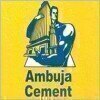Filter interviews by
ACC Shift Engineer Interview Questions and Answers
6 Interview questions
Safe unloading tips are crucial for preventing accidents and injuries.
Always wear appropriate personal protective equipment (PPE) such as gloves, safety glasses, and steel-toed boots.
Inspect the unloading area for any hazards such as uneven ground, overhead obstacles, or slippery surfaces.
Use proper lifting techniques to avoid strain or injury - bend at the knees, keep your back straight, and lift with your legs.
S...
Cement temperature is an important factor in the production process, affecting setting time and strength of the final product.
Cement temperature should be monitored closely during production to ensure optimal conditions.
Higher temperatures can accelerate the setting time of cement, while lower temperatures can slow it down.
The ideal temperature range for cement production is typically between 90-120 degrees Celsiu...
Cement is a binding material used in construction to hold together bricks, stones, etc. It is prepared by mixing limestone, clay, and other materials.
Cement is made by heating a mixture of limestone and clay in a kiln at high temperatures
The resulting product, called clinker, is then ground into a fine powder and mixed with gypsum to create cement
Water is added to the cement to form a paste, which hardens over tim...
Types of cement include Portland cement, white cement, rapid hardening cement, and low heat cement.
Portland cement is the most common type used in construction.
White cement is used for architectural purposes and to create colored concrete.
Rapid hardening cement sets quickly and is used in projects with tight deadlines.
Low heat cement generates less heat during hydration and is used in large concrete structures.
Material handling procedure involves the safe and efficient movement of materials within a facility.
Establish clear guidelines for handling different types of materials
Train employees on proper lifting techniques and equipment usage
Implement safety measures such as wearing protective gear and using designated pathways
Regularly inspect equipment and storage areas for potential hazards
Utilize technology like conveyo...
Proper storage of materials is crucial for maintaining quality and safety standards in engineering operations.
Materials should be stored in designated areas to prevent mix-ups and ensure easy access.
Storage areas should be organized and labeled clearly for quick identification.
Certain materials may require specific storage conditions such as temperature control or protection from moisture.
Regular inventory checks ...
ACC Shift Engineer Interview Experiences
1 interview found
I applied via Approached by Company
(6 Questions)
- Q1. What is cement and how it prepared
- Ans.
Cement is a binding material used in construction to hold together bricks, stones, etc. It is prepared by mixing limestone, clay, and other materials.
Cement is made by heating a mixture of limestone and clay in a kiln at high temperatures
The resulting product, called clinker, is then ground into a fine powder and mixed with gypsum to create cement
Water is added to the cement to form a paste, which hardens over time to ...
- Q2. Types of cement
- Ans.
Types of cement include Portland cement, white cement, rapid hardening cement, and low heat cement.
Portland cement is the most common type used in construction.
White cement is used for architectural purposes and to create colored concrete.
Rapid hardening cement sets quickly and is used in projects with tight deadlines.
Low heat cement generates less heat during hydration and is used in large concrete structures.
- Q3. Cement temperature?
- Ans.
Cement temperature is an important factor in the production process, affecting setting time and strength of the final product.
Cement temperature should be monitored closely during production to ensure optimal conditions.
Higher temperatures can accelerate the setting time of cement, while lower temperatures can slow it down.
The ideal temperature range for cement production is typically between 90-120 degrees Celsius.
Tem...
- Q4. Material handling procedure
- Ans.
Material handling procedure involves the safe and efficient movement of materials within a facility.
Establish clear guidelines for handling different types of materials
Train employees on proper lifting techniques and equipment usage
Implement safety measures such as wearing protective gear and using designated pathways
Regularly inspect equipment and storage areas for potential hazards
Utilize technology like conveyor bel...
- Q5. Storage of material
- Ans.
Proper storage of materials is crucial for maintaining quality and safety standards in engineering operations.
Materials should be stored in designated areas to prevent mix-ups and ensure easy access.
Storage areas should be organized and labeled clearly for quick identification.
Certain materials may require specific storage conditions such as temperature control or protection from moisture.
Regular inventory checks shoul...
- Q6. Safe unloading tips
- Ans.
Safe unloading tips are crucial for preventing accidents and injuries.
Always wear appropriate personal protective equipment (PPE) such as gloves, safety glasses, and steel-toed boots.
Inspect the unloading area for any hazards such as uneven ground, overhead obstacles, or slippery surfaces.
Use proper lifting techniques to avoid strain or injury - bend at the knees, keep your back straight, and lift with your legs.
Secure...
Top trending discussions






Interview questions from similar companies

I applied via Company Website and was interviewed before Jun 2020. There was 1 interview round.
Interview Questionnaire
1 Question
- Q1. About boiler and turbine
Interview Preparation Tips

Interview Questionnaire
1 Question
- Q1. Maintenance Related

Interview Questionnaire
6 Questions
- Q1. What major jobs have you done
- Ans.
I have worked on various mechanical engineering projects, including designing and testing components for automotive engines and developing manufacturing processes.
Designed and tested components for automotive engines
Developed manufacturing processes
Performed stress analysis and simulation
Collaborated with cross-functional teams to ensure project success
Implemented cost-saving measures in production
Conducted research an...
- Q2. Kiln & vrm gear box maintenance
- Q3. What is maintenance done
- Ans.
Maintenance is the process of ensuring that equipment and machinery are in good working condition to prevent breakdowns and prolong their lifespan.
Regular inspection and cleaning of equipment
Replacing worn-out parts
Lubrication of moving parts
Testing and calibration of instruments
Record-keeping of maintenance activities
Examples: oil changes for cars, replacing air filters, checking tire pressure
- Q4. Has overhauling vrm gear box and sim is inserted in kiln tyer & cooler maintenance
- Q5. Bucket elevator maintenance ball Mill maintenance roller press maintenance
- Q6. Cf silo maintenance preheater maintenance

I appeared for an interview in Jun 2021.
Interview Questionnaire
2 Questions
- Q1. Salary discussion, appointment latter release.
- Q2. Smooth Onboarding. Arrangement for stay in new city
- Ans.
Provide assistance in arranging temporary accommodation and support for new employees during onboarding process.
Offer assistance in finding temporary accommodation options in the new city
Provide information on local transportation options for commuting to work
Offer guidance on nearby amenities such as grocery stores, restaurants, and healthcare facilities
Connect new employees with a buddy or mentor to help them navigat...

Interview Questionnaire
2 Questions
- Q1. Working cement
- Q2. Cement material

I applied via Approached by Company and was interviewed in Sep 2023. There were 2 interview rounds.

(7 Questions)
- Q1. Questions about machines engine, capacity details in Hydraulic, electronics and pneumatic system, personal profile, previous company resign reasion, salary, etc.
- Q2. Crane tfc280 engine details Jcb backholoder control valve diagram Cranes capacity and boom attachments Batching plant working details Surfaceminer drum width How much Hydraulic pumps and thier capacity
- Q3. Hydraulic knowledge in details
- Q4. Working profile
- Q5. How to handle the manpower.
- Ans.
Manpower can be handled by effective communication, delegation, training, and motivation.
Effective communication is key to ensure everyone is on the same page and understands their roles and responsibilities.
Delegation of tasks based on individual strengths and skills can help in maximizing productivity.
Providing training and development opportunities can improve skills and knowledge within the team.
Motivating employee...
- Q6. Hydraulic details knowledge
- Q7. How to handle manpower.
- Ans.
Manpower can be effectively handled by proper planning, communication, training, and motivation.
Develop a clear organizational structure and hierarchy
Communicate effectively with employees to ensure understanding of roles and responsibilities
Provide necessary training and development opportunities to enhance skills and knowledge
Motivate employees through recognition, rewards, and a positive work environment
Interview Preparation Tips
- Technical knowledge details
Good communication skills

I applied via Job Fair and was interviewed before Sep 2021. There were 2 interview rounds.

(3 Questions)
- Q1. Type of bearing and fan What is the thermal expansion
- Ans.
Thermal expansion is the tendency of matter to change in shape, area, and volume in response to a change in temperature.
Bearings can be of various types such as ball bearings, roller bearings, sleeve bearings, etc.
Fans can be of different types such as axial fans, centrifugal fans, etc.
Thermal expansion can cause changes in the dimensions of the bearing and fan components, which can affect their performance and lifespa...
- Q2. What is your strength
- Ans.
My strength lies in my problem-solving skills and attention to detail.
Strong problem-solving skills
Attention to detail
Ability to analyze complex situations
Effective communication skills
Adaptability and flexibility
Teamwork and collaboration
Strong technical knowledge
Experience with CAD software (e.g., AutoCAD, SolidWorks)
Knowledge of engineering principles and practices
- Q3. What is your ambition
- Ans.
To become a highly skilled and innovative Mechanical Engineer, contributing to the development of cutting-edge technologies.
To continuously enhance my technical knowledge and skills in mechanical engineering
To work on challenging projects that push the boundaries of innovation
To collaborate with a diverse team of professionals to solve complex engineering problems
To contribute to the development of sustainable and envi...
Interview Preparation Tips

Interview Questionnaire
5 Questions
- Q1. Why we use capacitor bank.
- Ans.
Capacitor banks are used to improve power factor, reduce reactive power, and enhance voltage stability in electrical systems.
Capacitor banks are used to correct power factor in electrical systems.
They help reduce reactive power and improve the efficiency of power transmission.
Capacitor banks are commonly used in industries, commercial buildings, and power distribution networks.
They can enhance voltage stability and red...
- Q2. How to select capacitor bank for a motor
- Ans.
Capacitor bank for a motor is selected based on power factor correction and motor size.
Calculate the power factor of the motor
Determine the required power factor correction
Select a capacitor bank with appropriate kVAR rating
Consider the motor size and load characteristics
Ensure the capacitor bank can handle the motor's reactive power demand
- Q3. Which type of relay use in your plant
- Ans.
We use electromagnetic relays in our plant.
Electromagnetic relays are commonly used in industrial applications.
They use an electromagnet to control the switching mechanism.
These relays are reliable and have a long lifespan.
Examples of electromagnetic relays include power relays and control relays.
- Q4. Difference between GRR and LRS
- Ans.
GRR and LRS are statistical methods used in engineering for different purposes.
GRR stands for Gauge Repeatability and Reproducibility, which measures the variation in measurement systems.
LRS stands for Linearity, Repeatability, and Stability, which measures the performance of a measurement system over time.
GRR focuses on the measurement system's ability to provide consistent and repeatable results.
LRS focuses on the me...
- Q5. Earth fault setting
Skills evaluated in this interview

I appeared for an interview in Mar 2023, where I was asked the following questions.
- Q1. Why we maintain burning zone temperature in rotary kiln?
- Ans.
Maintaining burning zone temperature in a rotary kiln is crucial for optimal material processing and product quality.
Ensures complete combustion of fuels, leading to efficient energy use.
Controls the formation of desired chemical compounds, such as clinker in cement production.
Prevents the formation of undesirable phases or compounds that can affect product quality.
Facilitates the proper melting and sintering of raw ma...
- Q2. How Nox formed in rotary kiln?
- Ans.
NOx formation in rotary kilns occurs due to high temperatures and combustion processes, leading to nitrogen oxidation.
High temperatures (over 1200°C) in rotary kilns facilitate the oxidation of nitrogen.
Fuel combustion in the presence of air generates NOx as a byproduct.
The reaction between nitrogen and oxygen at elevated temperatures forms nitric oxide (NO).
In the presence of excess oxygen, NO can further oxidize to n...
- Q3. What happen when your secondary air temperature is in low range & dowan trend📉 .
- Ans.
Low secondary air temperature can indicate inefficiencies in combustion and affect system performance.
Indicates potential combustion inefficiency, leading to incomplete fuel burning.
Can cause increased emissions of unburned hydrocarbons and carbon monoxide.
May result in lower overall system efficiency, impacting energy output.
Example: In a boiler system, low secondary air temperature can lead to soot formation.
Could tr...
- Q4. What is the function of dip tube in preheatar Cyclone
- Ans.
A dip tube in a preheater cyclone directs feed material for efficient heat exchange and separation.
The dip tube helps in directing the feed material into the cyclone for optimal flow.
It ensures that the material is evenly distributed for effective heat transfer.
By controlling the entry point, it minimizes turbulence and enhances separation efficiency.
For example, in a cement plant, the dip tube aids in preheating raw m...
Interview Preparation Tips
ACC Interview FAQs
Tell us how to improve this page.
ACC Interviews By Designations
- ACC Assistant Manager Interview Questions
- ACC Deputy Manager Interview Questions
- ACC Safety Officer Interview Questions
- ACC Senior Executive Interview Questions
- ACC Teritory Sales Officer Interview Questions
- ACC Senior Sales Executive Interview Questions
- ACC Engineer Interview Questions
- ACC Analyst Interview Questions
- Show more
Interview Questions for Popular Designations
Overall Interview Experience Rating
based on 1 interview experience
Interview Questions from Similar Companies
ACC Shift Engineer Reviews and Ratings
based on 2 reviews
Rating in categories
|
Assistant Manager
407
salaries
| ₹6 L/yr - ₹13.9 L/yr |
|
Manager
234
salaries
| ₹8.9 L/yr - ₹34 L/yr |
|
Deputy Manager
189
salaries
| ₹11.2 L/yr - ₹19.3 L/yr |
|
Senior Executive
168
salaries
| ₹2.8 L/yr - ₹9 L/yr |
|
Sales Executive
138
salaries
| ₹2 L/yr - ₹5.3 L/yr |

UltraTech Cement

JK Cement

Grasim Industries

Shree Cement
- Home >
- Interviews >
- ACC Interview Questions













